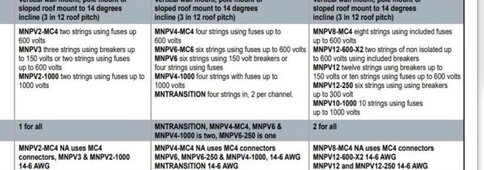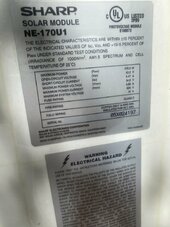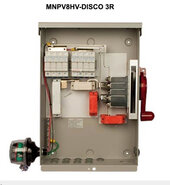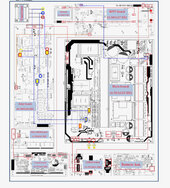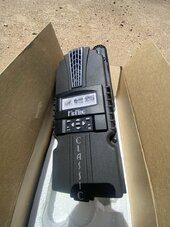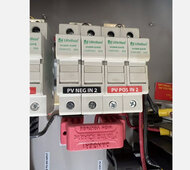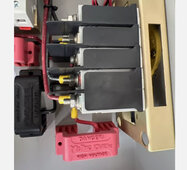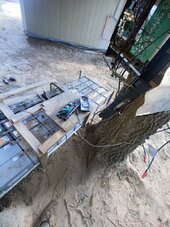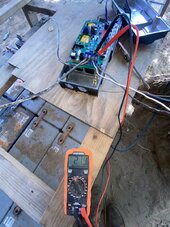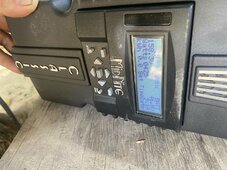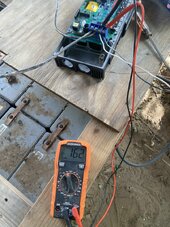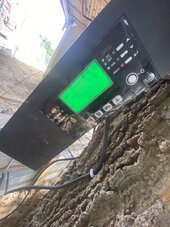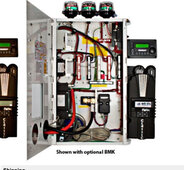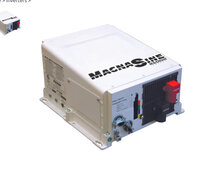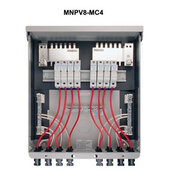joesmith123
New Member
48 panels total, 6 series, then 8 set of those in parallel
Each one is producing 225 volts, 10-15 amps max during peak daylight
I had only 6 sets running, and it fried a sungoldpower 6000 watt all in one unit
Now, I need advice on system that will handle and work reliably

Here is one idea where there is a midnite solar charge controller, and a big inverter that is GOOD brand (repairable)
Let me know if this diagram is going to be reliable, and let me know what inverter to use coming off the 48 volt battery system. The charge controller is gonna be a beefy midnite solar that is repairable. I'll look through and figure out the exact unit.
Also, for running air conditioning, I do see direct current AC units, is this possible? I will illustrate in this diagram:
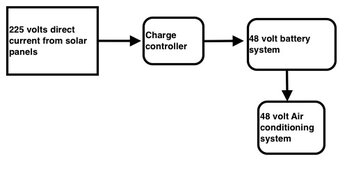
In this diagram, I would be running 48 volt Air conditioning system WITHOUT inverter, ONLY charge controller
Is this possible?
I want a reliable setup, I want to get away from weak points, I want to run air conditioning without inverter
Theoretical question:
if they made an Air conditioner that runs on 225 volts direct current, is it possible to hook up the solar panels directly to the air conditioner and it will run properly?
I am having to understand more complex solar systems because there is too much solar power being created, critique these concepts, I would be grateful
Another thing: I need to build a simple combiner box, all the ones on amazon burn up
I do not see veterans using cheap stuff, they customize all the connections and get rid of weak points
My suspicion: Its good to separate the charging and the inverting since both those processes create high heat, and having them in an all in one system, causes too much stress...

Midnite solar classic 250-SL: Is this unit the correct one for this application? My understanding:
It has an output of 63 amps. Does that mean that it can only collect 63 amps worth of solar and inject that into batteries?
The inverter still works on the sungoldpower 6000 watt, just the charging is not working,
could I get a charge controller and use that to charge the batteries, and run 240 VAC from the sungold power inverter to power home?
This unit here, midnite solar barcelona, would be the unit to handle this system, correct?
Up to 600 volt input solar, can handle putting 200 amps into 48 volt battery system
thank you
Each one is producing 225 volts, 10-15 amps max during peak daylight
I had only 6 sets running, and it fried a sungoldpower 6000 watt all in one unit
Now, I need advice on system that will handle and work reliably

Here is one idea where there is a midnite solar charge controller, and a big inverter that is GOOD brand (repairable)
Let me know if this diagram is going to be reliable, and let me know what inverter to use coming off the 48 volt battery system. The charge controller is gonna be a beefy midnite solar that is repairable. I'll look through and figure out the exact unit.
Also, for running air conditioning, I do see direct current AC units, is this possible? I will illustrate in this diagram:

In this diagram, I would be running 48 volt Air conditioning system WITHOUT inverter, ONLY charge controller
Is this possible?
I want a reliable setup, I want to get away from weak points, I want to run air conditioning without inverter
Theoretical question:
if they made an Air conditioner that runs on 225 volts direct current, is it possible to hook up the solar panels directly to the air conditioner and it will run properly?
I am having to understand more complex solar systems because there is too much solar power being created, critique these concepts, I would be grateful
Another thing: I need to build a simple combiner box, all the ones on amazon burn up
I do not see veterans using cheap stuff, they customize all the connections and get rid of weak points
My suspicion: Its good to separate the charging and the inverting since both those processes create high heat, and having them in an all in one system, causes too much stress...

Midnite solar classic 250-SL: Is this unit the correct one for this application? My understanding:
It has an output of 63 amps. Does that mean that it can only collect 63 amps worth of solar and inject that into batteries?
The inverter still works on the sungoldpower 6000 watt, just the charging is not working,
could I get a charge controller and use that to charge the batteries, and run 240 VAC from the sungold power inverter to power home?
This unit here, midnite solar barcelona, would be the unit to handle this system, correct?
Up to 600 volt input solar, can handle putting 200 amps into 48 volt battery system
thank you
Last edited:






